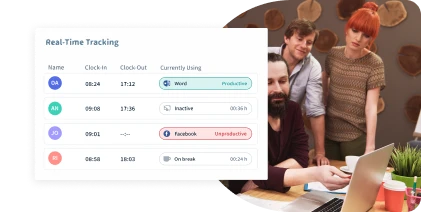Table of Contents
Are you tired of feeling overwhelmed and disorganized when managing your daily tasks?
Whether it’s work or personal responsibilities, juggling multiple priorities can be challenging. But fear not!
We have the solution: weekly schedule templates!
These handy tools will help you easily plan each day, ensuring that nothing falls through the cracks. This blog will walk you through the following topics:
- What are weekly schedule templates?
- Why should companies opt for a weekly schedule template?
- Components of a weekly schedule template
- Benefits of using a weekly schedule template
Furthermore, we’ll highlight how to use and maximize the potential of a weekly schedule template that will help you to better manage your workflow and stay on top of your to-dos.
So let’s get started by understanding:
What Is A Weekly Schedule Template?
A weekly schedule template is a pre-designed layout that helps individuals organize and plan their daily:
- Activities
- Tasks
- Appointments
It is a visual tool providing a structured framework to allocate time effectively and manage various responsibilities.
By utilizing a weekly schedule template, individuals can gain a comprehensive view of their upcoming week, allowing them to:
- Prioritize tasks
- Set realistic goals
- Allocate time for essential activities
It acts as a guide, helping individuals maintain focus, stay organized, and efficiently use their available time.
Why Companies Should Opt For A Weekly Schedule Template
In today’s fast-paced business world, staying organized and maximizing productivity are essential for companies to thrive.
These templates provide a structured framework to the organizations and streamline workflow, and enhance prioritization and time management.
Let’s explore why companies should opt for a weekly schedule template:
Structure For Efficiency:
A weekly schedule template brings order to the chaos by providing a clear framework for organizing tasks and activities.
It helps employees prioritize their work and allocate time effectively, ensuring that important tasks are not overlooked.
Templates act as visual guides, enabling employees to quickly assess their workload and deadlines.
Flexibility To Fit Different Needs:
Weekly schedule templates can be tailored to accommodate the unique needs and preferences of different departments or teams within a company.
Templates can be customized to include specific categories or sections relevant to the company’s operations, such as:
- Project milestones
- Client meetings
- Team collaboration time
By allowing customization, templates can be adapted to suit various work styles and enhance individual and team productivity.
Companies can create a more organized and productive work environment by adopting a weekly schedule template.
Now let’s understand:
Components Of A Weekly Schedule Template
When creating a weekly schedule template, several key components are vital to ensure its effectiveness.
Let’s explore each of these components:
Header:
The template’s header typically includes the title, company logo, or other relevant information that helps identify the schedule. It provides a visual anchor and sets the tone for the rest of the document.
Time Slots:
Time slots divide each day into manageable segments, such as:
- Morning
- Afternoon
- Evening
These slots allow employees to allocate specific blocks of time to different tasks, ensuring a structured approach to their workday.
Days Of The Week:
The template features the week’s days, from Monday to Sunday. Each day is allocated its section, providing a clear breakdown of the entire week.
Tasks And Activities:
This component allows employees to list their daily tasks and activities. Whether it’s:
- Project-Related Work
- Meetings
- Personal Tasks
A designated space to record these ensures they are properly accounted for and not forgotten.
Prioritization:
A crucial aspect of any effective schedule template is the ability to prioritize tasks.
Employees can mark tasks based on their importance or urgency through:
- Color-coding
- Numbering
- Other means
This helps individuals focus on critical tasks and manage their time efficiently.
Flexibility:
Recognizing that schedules may change or unexpected events may arise, a good template incorporates flexibility.
It allows room for adjustments and additions, ensuring employees can adapt to new priorities or accommodate unforeseen circumstances.
Benefits Of Using A Weekly Schedule Template
Improved Time Management And Productivity:
- Allocate time effectively to different tasks, ensuring optimal productivity
- Stay focused and motivated by having a clear plan for each day
- Avoid wasting time on unimportant or low-priority activitie
Enhanced Organization And Prioritization Of Tasks:
- Keep track of important deadlines, meetings, and appointments
- Prioritize tasks based on urgency and importance.
- Ensure no tasks or commitments slip through the cracks
Reduced Stress And Better Work-Life Balance:
- Create a sense of order and structure, reducing stress and anxiety
- Allocate time for personal activities, self-care, and relaxation
- Achieve a healthy balance between work and personal life
Increased Accountability and Motivation:
- Hold yourself accountable by having a visual representation of your commitments
- Experience a sense of accomplishment as you check off completed tasks
- Stay motivated and driven by having a roadmap for your week
Now let’s take a look at:
How To Use A Weekly Schedule Template
Step 1: Time Slots:
Start by determining the time slots you want to allocate for your weekly schedule. Decide how many hours or intervals you want to divide each day into.
For example, you might choose 30-minute intervals or 1-hour blocks.
Step 2: Days Of The Week:
Identify the days of the week you want to include in your schedule.
Typically, this would be Monday through Sunday, but you can customize it according to your needs.
Consider any specific events or appointments that occur regularly on certain days.
Step 3: Tasks And Activities:
Create a list of all the tasks and activities you must accomplish during the week. Include both recurring activities and one-time tasks. This includes:
- Work-related assignments
- Personal errands
- Appointments
- Exercise routines
- Family time
- Other commitments
Step 4: Prioritization:
Assign priorities to each task or activity based on their importance and urgency.
Identify the most critical items that require immediate attention and allocate sufficient time for them.
Use labels or symbols to distinguish between high-priority and low-priority tasks.
Step 5: Flexibility:
Consider incorporating flexibility into your schedule. Allow buffer time between tasks to account for unexpected events, interruptions, or delays.
Having room for adjustments and adaptability is essential to ensure a realistic and manageable schedule.
Step 6: Fill In The Template:
Using a weekly schedule template or creating your own, start filling in the time slots for each day of the week.
Allocate specific time periods for each task or activity, keeping in mind their priority levels.
Be mindful of balancing your workload and incorporating breaks or downtime to avoid burnout.
Step 7: Review And Revise:
Regularly review your weekly schedule to ensure it aligns with your goals and commitments. Adjust as needed, such as:
- Rescheduling tasks
- Accommodating new appointments
- Reallocating time for unexpected events
Continuously evaluate your schedule’s effectiveness and make improvements to optimize your productivity and well-being.
Tips for Optimizing Your Weekly Schedule
Time Management With Time Tracking:

One effective way to optimize your weekly schedule is by implementing time tracking.
By using a reliable time-tracking tool like Workstatus, you can gain valuable insights into how you spend your time and identify areas for improvement.
Here’s how time tracking can enhance your time management:
1) Gain Awareness:
Time tracking brings awareness to how much time you allocate to different tasks and activities, helping you identify time-consuming activities and areas where you can make adjustments.
2) Identify Productivity Patterns:
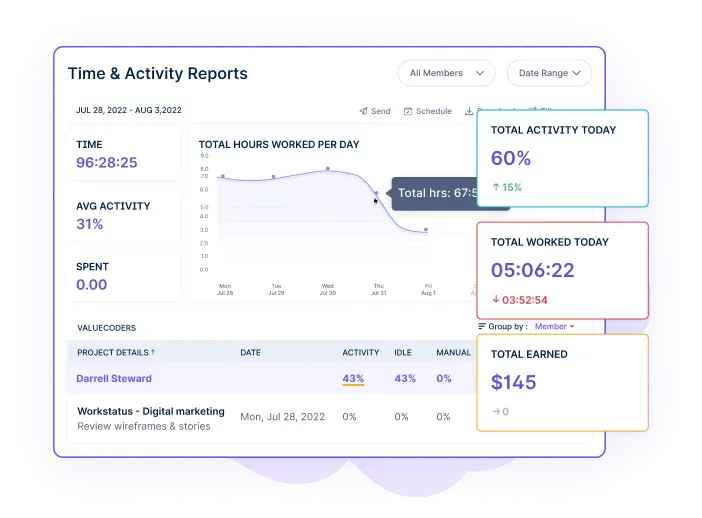
Tracking your time allows you to analyze your productivity patterns.
You can determine your peak hours of focus and productivity, enabling you to schedule your most important and challenging tasks during those times.
3) Measure Progress:
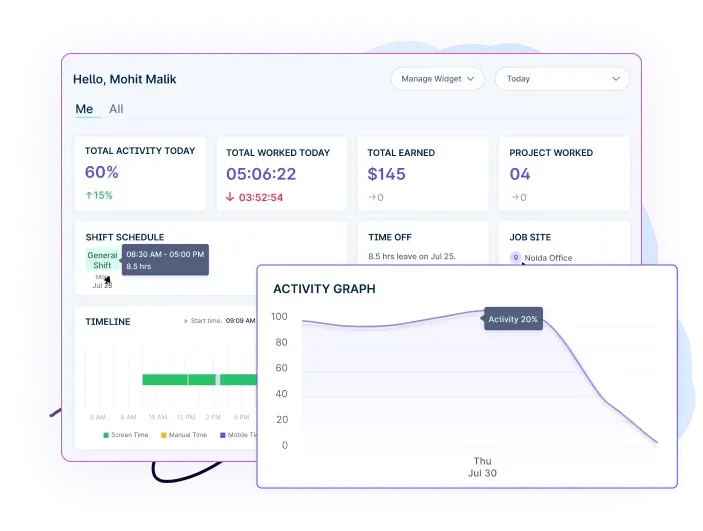
Time tracking provides tangible data to measure your progress and productivity. It helps you set realistic goals and evaluate your efficiency in completing tasks within the allocated time.
Prioritization And Task Batching:
Effective prioritization is crucial for optimizing your weekly schedule.
Here’s how you can make the most of your time by prioritizing and task batching:
1) Identify High-Priority Tasks:
Determine the most important tasks and align them with your goals or deadlines. Prioritize these tasks and allocate dedicated time slots for them in your weekly schedule.
2) Task Batching:
Group similar or related tasks together and allocate specific time blocks. This approach minimizes context switching and allows you to maintain focus and efficiency.
3) Time Blocking And Pomodoro Technique:
Time blocking and the Pomodoro technique are effective strategies to enhance productivity and focus. Here’s how you can utilize them to optimize your weekly schedule:
4) Time Blocking:
Allocate specific time blocks for different categories of tasks or activities in your schedule.
You create a structured routine that minimizes distractions and maximizes productivity by assigning dedicated time for:
- Specific Work
- Meetings
- Breaks
- Personal activities
5) Pomodoro Technique:
The Pomodoro technique involves breaking your work into focused intervals, typically 25 minutes, followed by short breaks.
Incorporating Pomodoro intervals into your schedule can boost productivity and prevent burnout by providing regular breaks and maintaining a sense of urgency.
Utilizing Technology And Productivity Tools:
Leveraging technology and productivity tools can significantly optimize your weekly schedule. Consider the following:
Productivity Tracking:
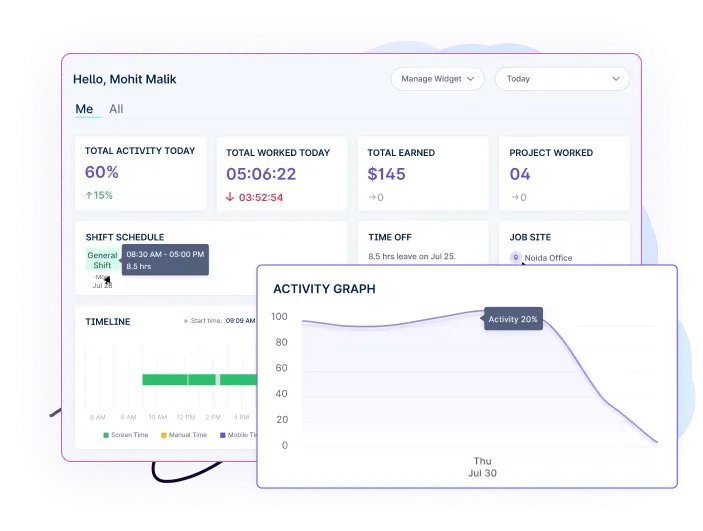
To gauge your progress and identify areas for improvement, consider using productivity tracking tools.
Workstatus, for example, offers productivity monitoring features that measure:
- Activity levels
- Track app
- Website usage
- Provide insights into your overall productivity trends
You can identify patterns, address time-wasting activities, and adjust your schedule by monitoring your productivity.
Task Management:
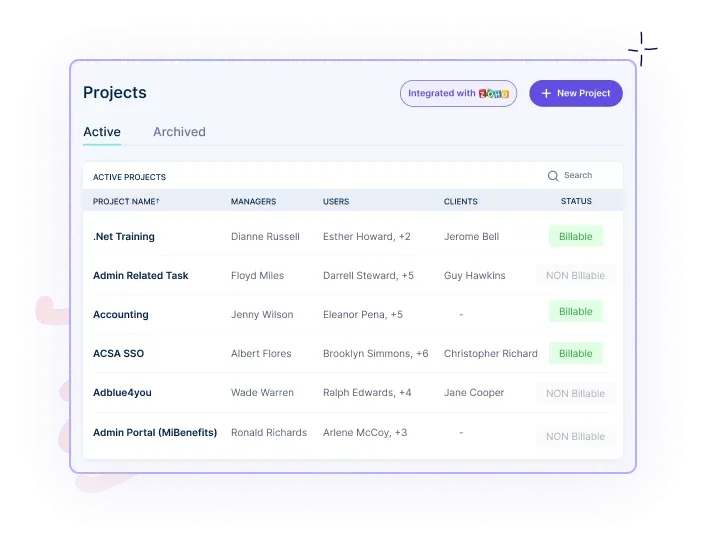
Efficient task management is key to staying organized and on top of your responsibilities.
Utilize task management tools such as Workstatus, a workflow management software to:
- Capture
- Prioritize
- Track Your Tasks
Such tools help you stay focused, collaborate with team members, and ensure that nothing falls through the cracks.
Incorporating these tips into your weekly schedule can:
- Boost productivity
- Improve time management
- Achieve a better work-life balance
Embrace the power of technology and effective strategies to optimize your schedule and maximize your productivity potential.
Now let’s take a look at:
Industries Where Weekly Schedule Templates And Workstatus Can Help
Healthcare Industry:
 Maintaining an organized schedule is crucial in the healthcare industry, where professionals often work in demanding and fast-paced environments.
Maintaining an organized schedule is crucial in the healthcare industry, where professionals often work in demanding and fast-paced environments.
Weekly schedule templates, coupled with Workstatus’s time tracking and productivity monitoring features, can greatly benefit healthcare professionals by:
- Allowing them to effectively manage patient appointments, surgeries, and other medical procedures
- Tracking time spent on administrative tasks ensures accurate billing and efficient use of resources
- Providing insights into productivity trends helps identify areas for improvement and optimize patient care
Creative Agencies:

Creative agencies thrive on delivering high-quality work within strict deadlines.
Weekly schedule templates, along with Workstatus’s time tracking and project management capabilities, can support creative agencies in the following ways:
- Facilitating project planning by allocating time for brainstorming, concept development, and client meetings
- Tracking time spent on individual projects to ensure accurate billing and resource allocation
- Offering productivity insights to identify peak creative hours and eliminate time-consuming tasks, leading to enhanced efficiency and timely project delivery
IT and Software Development:

In the IT and software development industry, where collaboration and adherence to project timelines are essential, weekly schedule templates combined with Workstatus’s time tracking and productivity tools can bring significant advantages, including:
- Allocating time for specific development tasks, testing, and bug fixes, ensuring a systematic approach to project delivery
- Monitoring team productivity and identifying bottlenecks or areas for improvement to enhance overall efficiency
- Tracking time spent on different projects, enabling accurate client billing, and facilitating resource allocation for future endeavors
These examples demonstrate how combining weekly schedule templates and Workstatus’s features can:
- Optimize time management
- Boost productivity
- Streamline operations in various industries
By leveraging these tools, professionals can:
- Achieve organized workflow
- Improved project outcomes
- Achieve a healthy work-life balance
Conclusion
Throughout this blog, we have explored the power and benefits of utilizing a weekly schedule template. By incorporating this simple yet effective tool into your routine, you can:
- Gain a clear overview of your obligations and responsibilities for the week
- Prioritize tasks and allocate time effectively, leading to improved productivity
- Maintain a better work-life balance by managing your time more efficiently
- Reduce stress and stay organized despite busy schedules and multiple commitments
- Enhance collaboration and communication by sharing schedules with team members or stakeholders
Now that you understand the significance of a weekly schedule template, it’s time to take action and implement this valuable tool in your work and personal life.
One platform that can assist you in this endeavor is Workstatus.
With its user-friendly interface, comprehensive time tracking, and productivity monitoring features, Workstatus can complement your weekly schedule routine and help you achieve optimal results.

